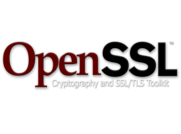Five Essential OpenSSL Troubleshooting Commands
 Troubleshooting SSL certificates and connections? Here are five handy openssl commands that every network engineer should be able to use. Bookmark this – you never know when it will come in handy!
Troubleshooting SSL certificates and connections? Here are five handy openssl commands that every network engineer should be able to use. Bookmark this – you never know when it will come in handy!
1. Check the Connection
openssl s_client -showcerts -connect www.microsoft.com:443
This command opens an SSL connection to the specified site and displays the entire certificate chain as well. Here’s an abridged version of the sample output:
MBP$ openssl s_client -showcerts -connect www.microsoft.com:443
CONNECTED(00000003)
depth=2 /C=US/O=VeriSign, Inc./OU=VeriSign Trust Network/OU=(c) 2006
VeriSign, Inc. - For authorized use only/CN=VeriSign Class 3 Public
Primary Certification Authority - G5
verify error:num=20:unable to get local issuer certificate
verify return:0
---
Certificate chain
0 s:/1.3.6.1.4.1.311.60.2.1.3=US/1.3.6.1.4.1.311.60.2.1.2=
Washington/businessCategory=Private Organization/
serialNumber=600413485/C=US/postalCode=98052/ST=Washington/
L=Redmond/street=1 Microsoft Way/O=Microsoft Corporation/
OU=MSCOM/CN=www.microsoft.com
i:/C=US/O=Symantec Corporation/OU=Symantec Trust Network/
CN=Symantec Class 3 EV SSL CA - G3
-----BEGIN CERTIFICATE-----
[...]
-----END CERTIFICATE-----
1 s:/C=US/O=Symantec Corporation/OU=Symantec Trust Network/
CN=Symantec Class 3 EV SSL CA - G3
i:/C=US/O=VeriSign, Inc./OU=VeriSign Trust Network/OU=(c) 2006
VeriSign, Inc. - For authorized use only/CN=VeriSign Class 3
Public Primary Certification Authority - G5
-----BEGIN CERTIFICATE-----
[...]
Continue reading